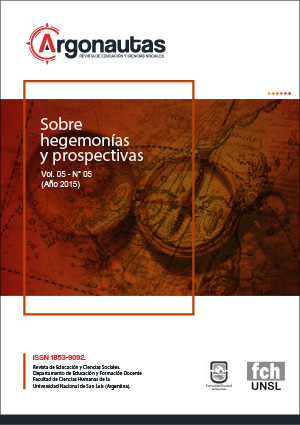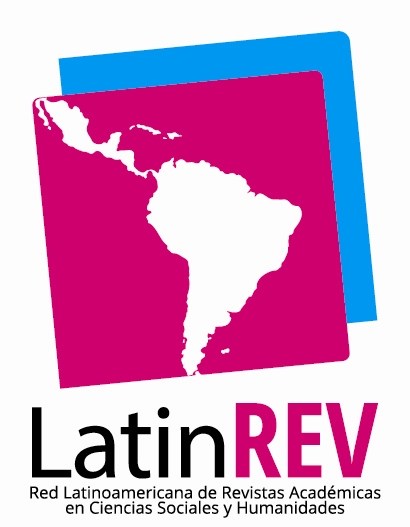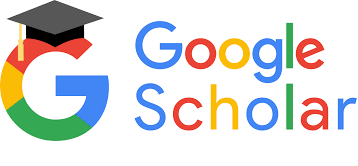How do students of Psychology use ICT for the reading-comprehension ofacademic text written in English?
Keywords:
CIT, uses, pedagogical implications, high educationAbstract
This work is framed in the Research Project “Academic- scientific Communication: texts: Contexts, resource and pedagogical interventions at university”. The purpose is to know which ICT resources the students have, the use and the frequency with which the students of ESP use them for their homework and classroom activities. Data were collected by means of questionnaires designed by teachers of the Teacher Training and ICT Major of the Ministry of National Education. A random sample of 20 students enrolled in the abovementioned course of the School of Psychology, Faculty of Psychology, National University of San Luis was selected. Results show that most of the students have computers and wi-fi access but that the use they make of them is not for academic purposes but for social ones such as taking part in social networks, in chats or receiving or sending e- mail. This would imply that the training of these NET students is not in line with the new literacies needed to take full advantage of the ICT for academic training.
Downloads
References
Area Moreira, M.; Martín, A. G.; y Fernández, F. V. (2012). Alfabetización Digital y Competencias Informacionales. Madrid: Fundación Encuentro y Fundación Telefónica.
Coll, C. (2005). “Lectura y Alfabetismo en la sociedad de la información”, UOC Papers. Recuperado de: http://www.uoc.edu/uocpapers/1/esp/coll.pdf Consultado el 12/04/14.
Coll, C. (2009). “Aprender y enseñar con las TIC: Expectativas, realidad y potencialidades”, en Carneiro, R., Toscano, J. y Diaz, T. (coord.) Los desafíos de las TIC para el cambio educativo, Madrid, OEI.
Corica, J. y Dinerstein, P. (2009). Diseño curricular y nuevas generaciones. Incorporando a la generación NET. Mendoza: Editorial Virtual Argentina.
Diaz Barriga, A. (2013). “TIC en el trabajo del aula. Impacto en la planeación didáctica”. Revista Iberoamericana de Educación Superior 10: 3-21
Dussel, I. (s/r). “Los nuevos alfabetismos en el siglo XXI. Desafíos para la escuela”. Recuperado de: http://www.virtualeduca.info/Documentos/veBA09%20_confDussel.pdf Consultado el 30/11/13.
Dussel, I. (2011). Aprender y enseñar en la cultura digital. Buenos Aires: Santillana.
Ferreiro, E. (2011). “Alfabetización digital ¿De qué estamos hablando?” En Revista Educaçao e Pesquisa 2: 425-438. Universidade de São Paulo, Brasil. Recuperado de: http//www.redalyc.org/artículo.oa?id=29819096014. Consultado el 21/10/12.
Ferreiro, R. (s/f) “Generación Net, nuevas formas de aprender”. Recuperado de: http://www.istmoenlinea.com.mx/artículos/28709.html. Consultado el 23/03/14
Finquelievich, S. &y Prince, A. (2006). Universidades y TICs en Argentina: universidades argentinas en la Sociedad de la Información. Buenos Aires: Fundación Telefónica.
Gilster, P. (1997). Digital Literacy. New York, USA: Wiley.
Pico, .M. L. y Rodríguez, C. (2011). Trabajos colaborativos: serie estrategias en el aula en el modelo 1 a 1. Buenos Aires: Educ.ar
Puebla, M. M. y Puchmüller, A. (2009). ¿Cómo evalúan la credibilidad hipertextual los alumnos universitarios?, actas de ALEDar – Asociación Latinoamericana de Estudios del Discurso, Regional Argentina, 17-25.
Prensky, M. (2008). El papel de la tecnología en la enseñanza y en el aula. Educational Technology.
Reig D. y Vilchez L. (2013). Los jóvenes en la era de la hiperconectividad: tendencias, claves y miradas. Madrid: Fundación Encuentro y Fundación Telefónica
Travieso, J. L. y Planella, J. (2008). La alfabetización difgital como factor de inclusión social: una mirada crítica. UOC Papers, Recuperado de: http://www.uoc.edu/uocpapers/1/esp/coll.pdf Consultado el 24/04/14.
Downloads
Published
Issue
Section
ARK
License
Copyright (c) 2015 Mara Marcela Puebla

This work is licensed under a Creative Commons Attribution 4.0 International License.






